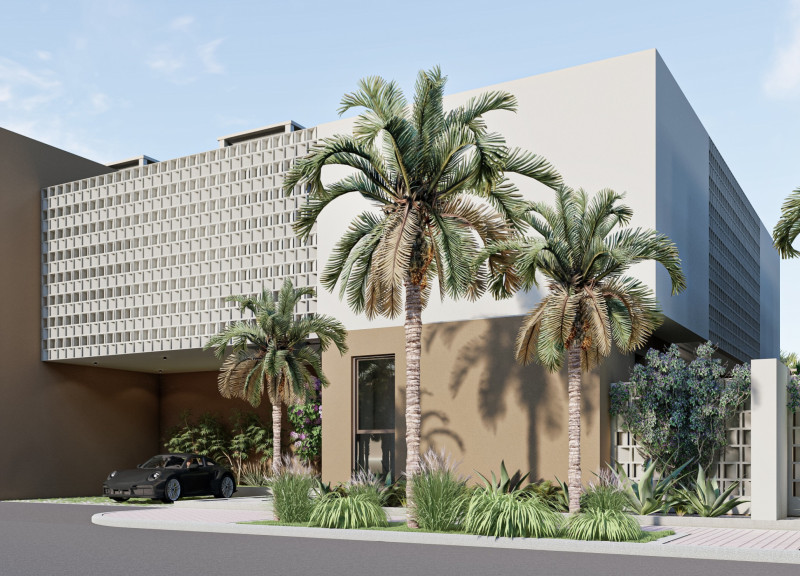5 key facts about this project
At its core, the project serves a multifaceted role, accommodating various activities that promote interaction, community, and accessibility. The layout is meticulously organized to facilitate ease of movement while encouraging social connectivity among different spaces. The arrangement of functional areas is intuitive, allowing users to navigate the structure naturally. This careful consideration of spatial organization enhances the overall experience, making it approachable to visitors and occupants alike.
A unique aspect of this project lies in its materiality. The designer has chosen a blend of durable and sustainable materials that not only contribute to the longevity of the structure but also resonate with the local vernacular. The use of natural stone and wood creates a harmonious relationship with the landscape, while also addressing environmental concerns by minimizing energy use through efficient building practices. Expansive glass facades allow abundant natural light to penetrate the interiors, creating inviting spaces that foster well-being and productivity. Furthermore, these transparent surfaces blur the boundaries between indoor and outdoor environments, enhancing the users' experience of the site.
The architectural design thoughtfully incorporates elements that respond to climate considerations, further emphasizing the project’s sustainable approach. Overhangs and shaded areas have been strategically implemented to control solar gain, thereby reducing reliance on artificial heating and cooling. Green roofs and landscaped terraces not only add a layer of environmental efficiency but also serve as recreational spaces that contribute to the occupants' quality of life. The design embraces the idea that architecture can support both human needs and ecological health.
Details throughout the project reflect a deep understanding of context and craftsmanship. The interplay of textures, from the roughness of the stone to the smoothness of polished concrete, creates a tactile experience that engages users on multiple sensory levels. Interior spaces are characterized by an understated elegance, with simple yet effective furnishings that complement the architecture without overwhelming it. Attention to detail is evident in features such as custom lighting installations and built-in elements that optimize space usage while maintaining a cohesive aesthetic.
Moreover, the project demonstrates innovative design approaches by incorporating multifunctional spaces that can adapt over time. This flexibility allows for a variety of uses, ensuring that the architecture remains relevant and responsive to changing community needs. The thoughtful integration of technology further enhances the functionality of the spaces, providing modern conveniences while retaining a focus on sustainability.
This architectural endeavor represents a harmonious blend of creativity, practicality, and environmental consideration. It challenges conventional design norms by prioritizing user experience and ecological responsibility, demonstrating how architecture can embody both form and function. Through its intentional design choices, the project serves as a model for future developments, highlighting the potential for architecture to positively impact its users and the broader environment.
For those interested in exploring the project further, I encourage you to delve into architectural plans, sections, and designs to fully appreciate the depth of ideas and approaches that underpin this noteworthy project. Such resources will provide invaluable insights into the intricacies of the design and demonstrate how thoughtful architecture can truly enrich our built environment.


























